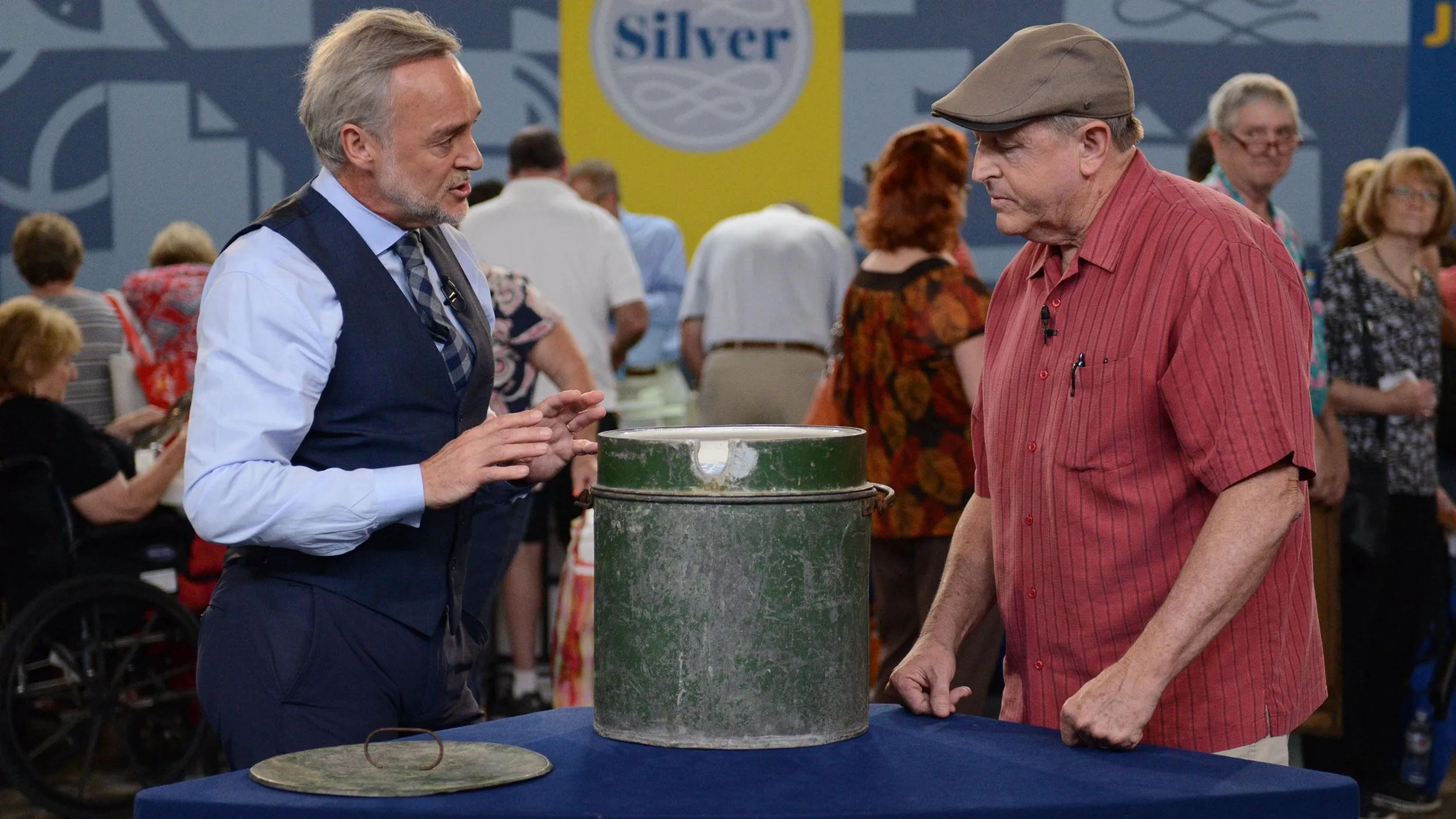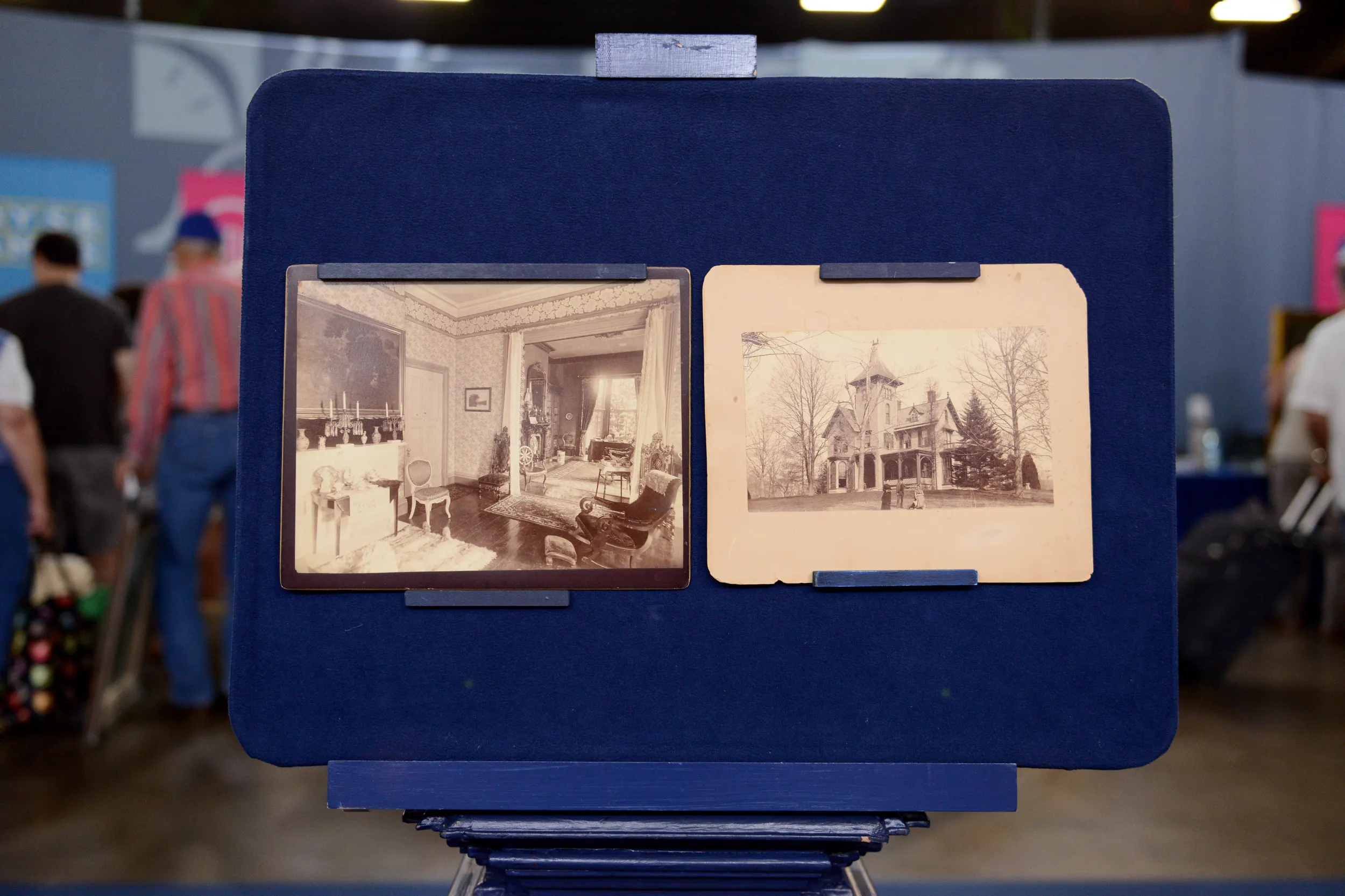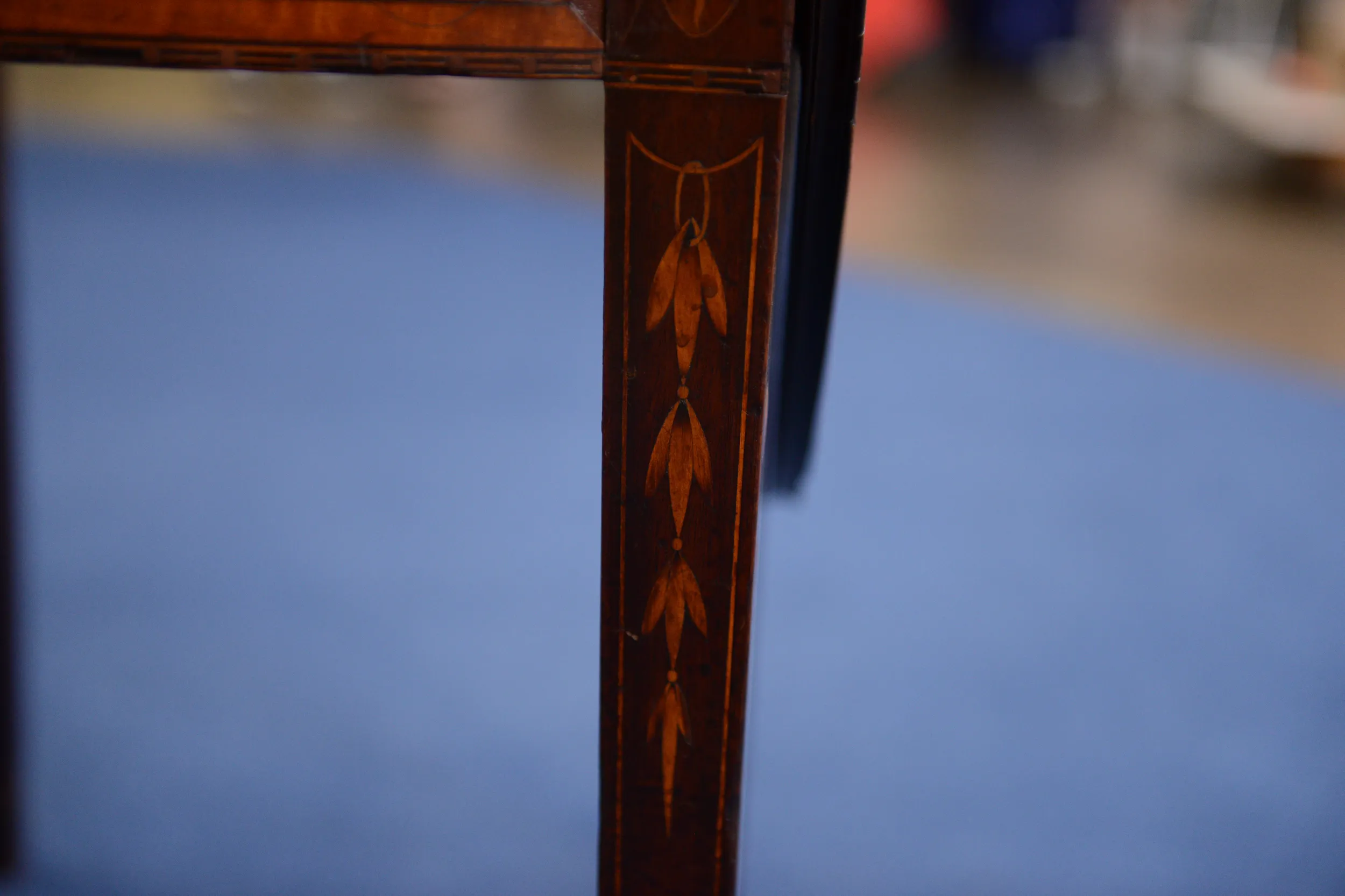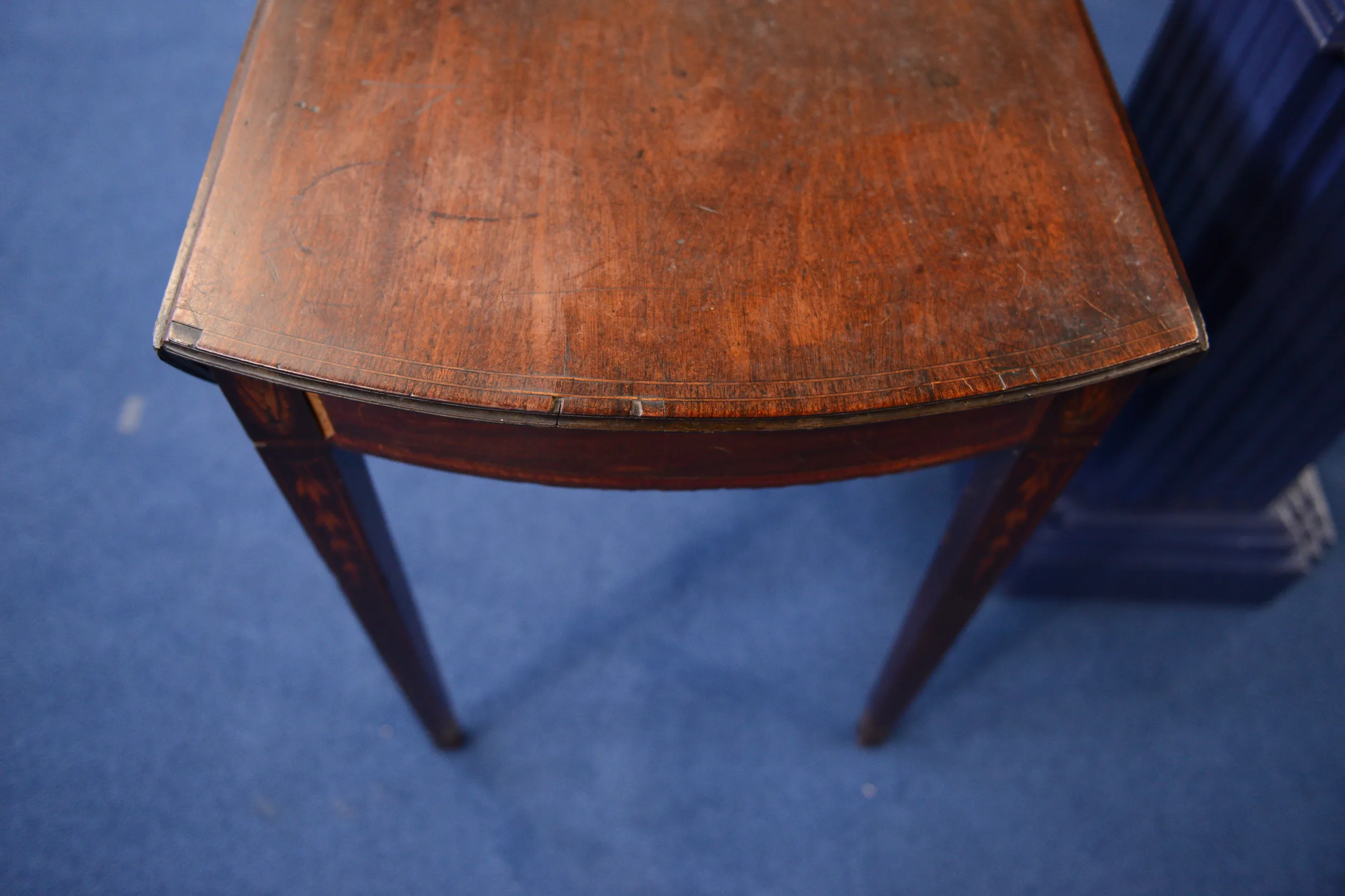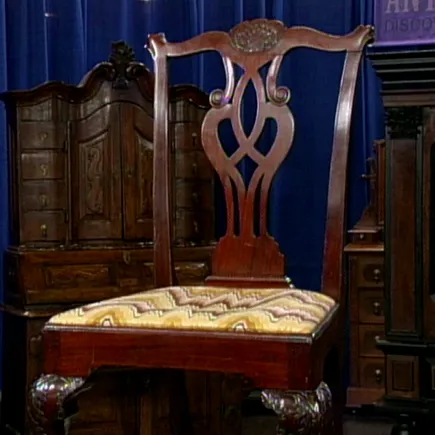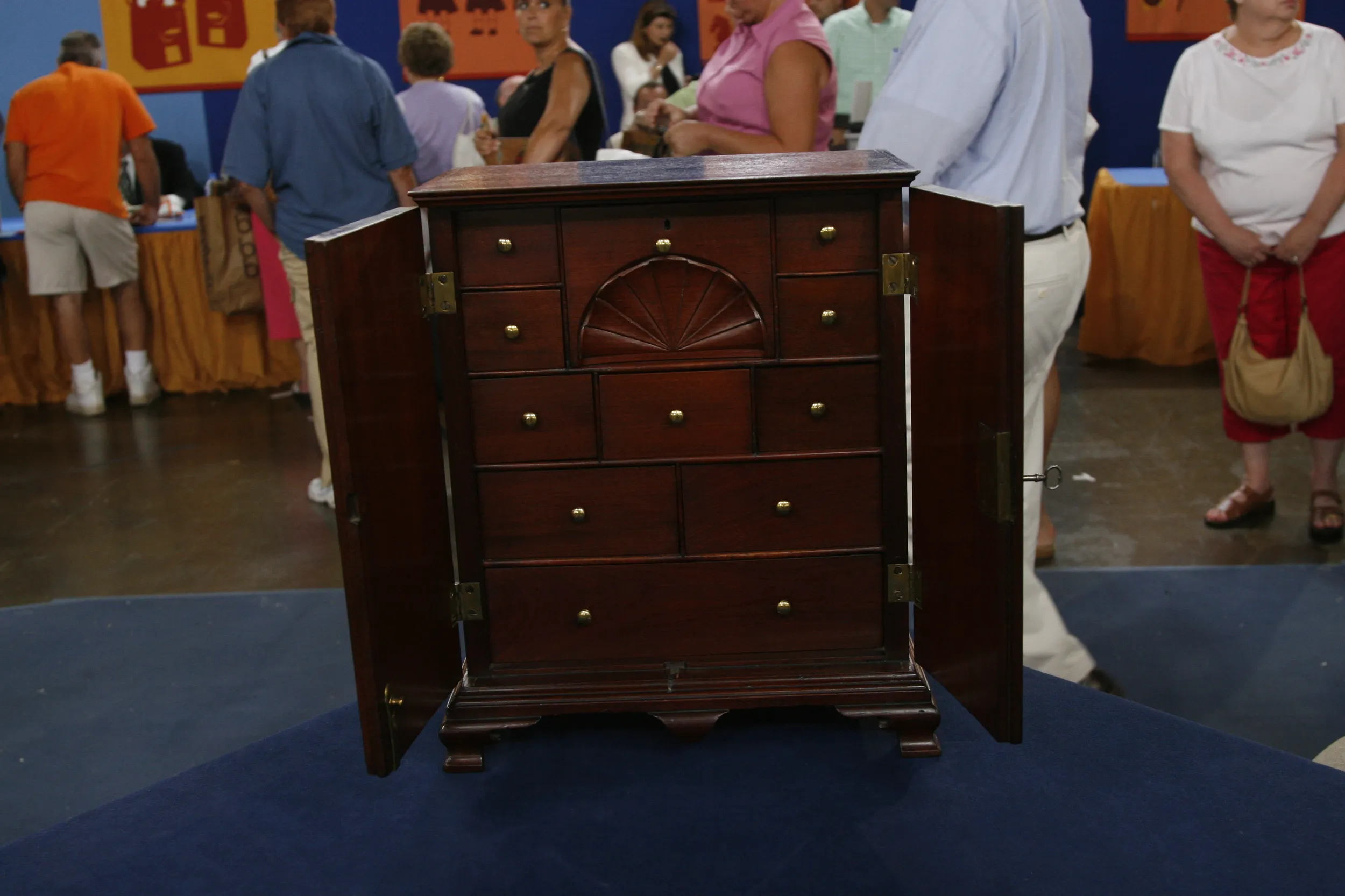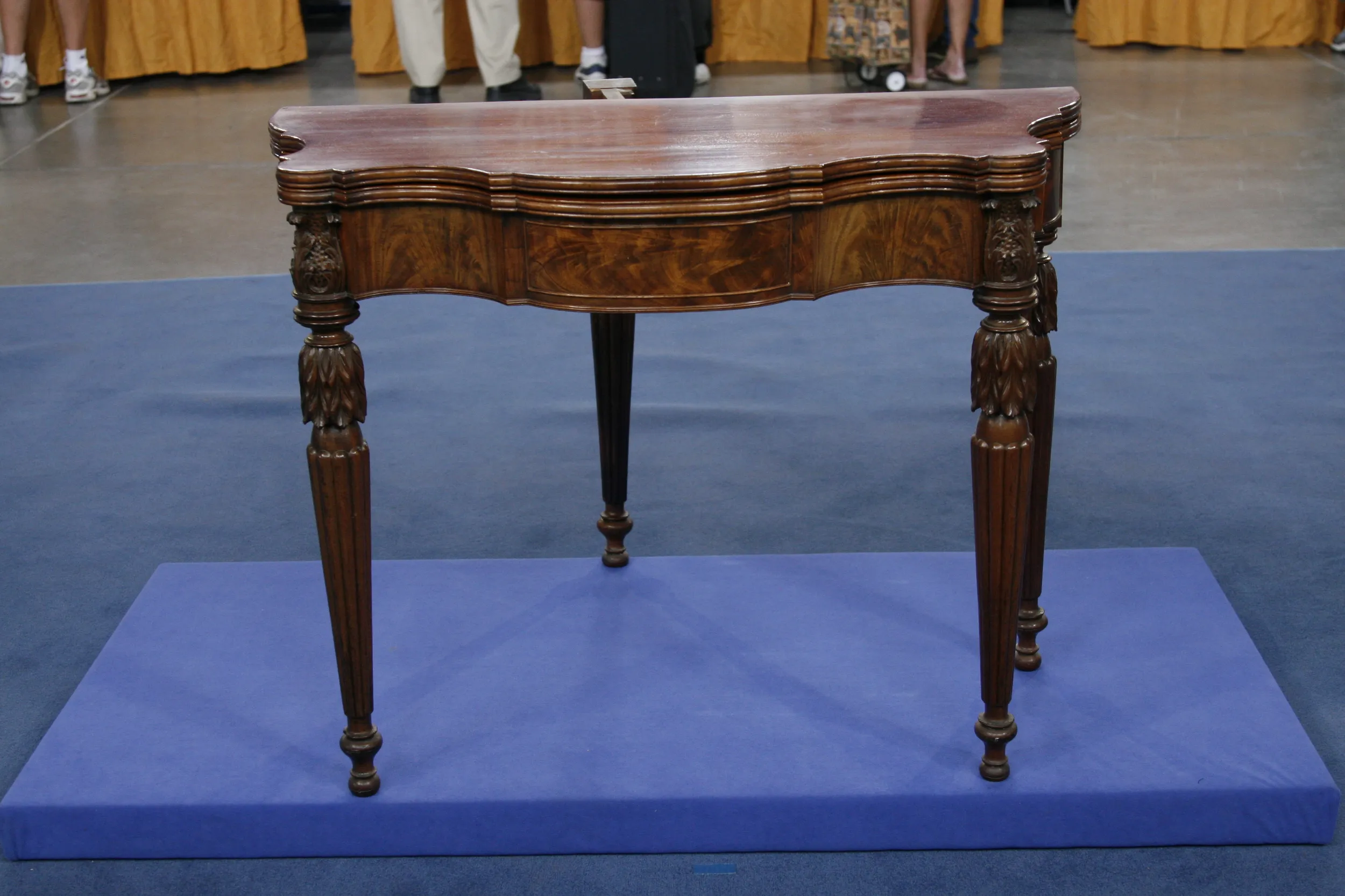GUEST: Well, this table was in my great-great- grandfather's house, and this is a picture of the room where the table was found. And my grandfather lived in this house when he was growing up, and then I inherited it from my mom.
APPRAISER: If we go back to your great-great-grandfather, what date might that be?
GUEST: He lived until 1916, so he was born in the mid-1800s.
APPRAISER: I knew where this was from... The minute you took the blanket off, I said, "I know who made it, I know when it was made, and I know where it was made." The table is from the 1790s.
GUEST: Okay, wow.
APPRAISER: And it was made in Baltimore. And it predates your great-great-grandfather's owning it. And the form is called a Pembroke table. They were made everywhere, but the Pembroke form in this case is a little bit more sophisticated than your typical table because it has bowed ends, and the bowed ends continue on into the demilune leaves. What's special about the top is that the edge is concave. If I tip this up, we can see that there's a beaded edge right here, and a concavity which makes it look a little bit lighter visually.
GUEST: Uh-huh.
APPRAISER: It also has compound inlays and cross-banding. It's a mahogany table with rosewood banding on the edge, which is another feature that makes it better than your average Pembroke table.
GUEST: Uh-huh.
APPRAISER: Now, rosewood is a protected species. It's endangered. It comes out of the tropics just the way mahogany did. There are movements these days to try and limit the sale and use of rosewood. This table can be sold because it's old enough-- the rosewood was harvested long ago.
GUEST: Right.
APPRAISER: What really allows me to put this in a school of cabinet makers in Baltimore is the inlay that's on the leg. You've got the string inlay outlining the edges of the leg, but then at the top, we have an oval... almost like a ring that's been elongated. And from that ring are graduated bell flowers. The bell flowers have a three-dimensionality to them, and the way they accomplish that, they'll lay it in hot sand to burn it ever so slightly.
GUEST: Oh, wow.
APPRAISER: This is the school of Levin Tarr. Levin Tarr worked in Baltimore at the end of the 18th century. He finished an apprenticeship in 1793. He's first recorded as having been a cabinet maker in that city around 1794, and went on to a prolific career until about 1821. What's really special is the condition. This table is untouched. The cuffs are missing, some of the banding is missing, but when it comes to American furniture, to find a piece like this that's totally pristine from a benign neglect point of view is quite rare.
GUEST: Wow.
APPRAISER: I think because of the condition and the fact that it has this grungy surface-- grungy is a good thing in this case...
GUEST: Okay, good.
APPRAISER: ...I think it can safely stand an auction estimate of $20,000 to $30,000.
GUEST: Wow, that is amazing. I have to be real careful with it.

